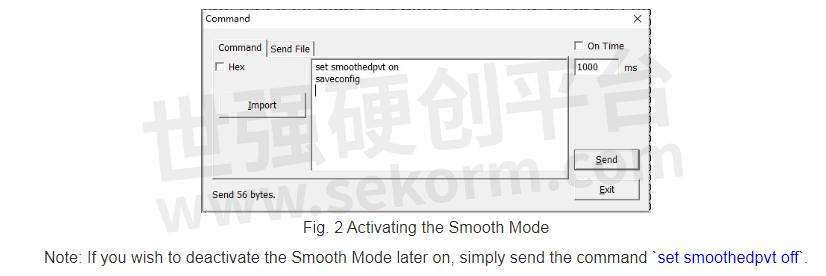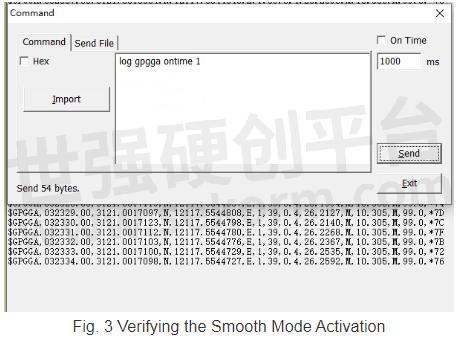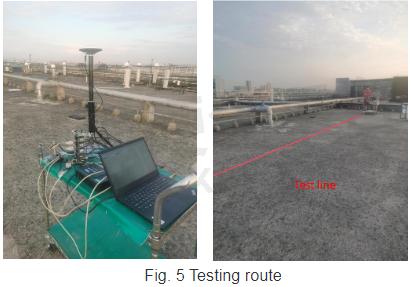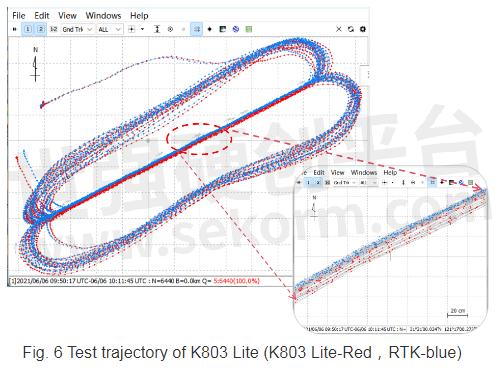DP-filter Smooth Technology: Pass to Pass Solution for Agricultural Guidance Systems

GNSS receivers operating in the single-point autonomous mode offer a horizontal accuracy of around 1.5 meters. While this might sound precise, it often experiences significant drift due to pseudorange accuracy inconsistencies and a lack of correction inputs during positioning calculations. In specific applications, like agricultural guidance systems, it isn't the absolute accuracy that counts but the relative precision across continuous epochs and adjacent paths. Discontinuities, even minor ones, can be highly problematic for users.
Enter Comnav Technology's DP-filter, a state-of-the-art smoothing filter algorithm that leverages carrier phase, delta-carrier phase, pseudorange, and Doppler observations. This article dives into the DP-filter's technical underpinnings, configuration, tested results, and its potential application scenarios.

1. Technical Introduction
Carrier phases offer superior accuracy, reduced noise, and increased resistance to multipath effects. Drawing from these advantages, the DP filter refines relative positioning precision, ensuring smooth and consistent outcomes unaffected by pseudorange inaccuracies. When engaged, this filter delivers consistent position error and assures a smooth (pass to pass) accuracy within the sub-meter to centimeter range.
2. Smooth Mode configuration
Here is how to enable the Smooth mode for SinoGNSS K8 series OEM modules.
2.1. Activating the Smooth Mode
● Enable the feature: Begin by sending the command `Set smoothedpvt on`. This instruction activates the smooth mode.
●Save the configuration: Once you've activated the mode, make sure you save the configuration. Do this by sending the command `Saveconfig`.

2.2. Verifying the Smooth Mode Activation
To check if your OEM board is operating in the smooth mode:
● Output the `GPGGA` message.
● In the displayed message, inspect the solution status. If it reads `E,1`. Moreover, the differential age value should be `99`. It indicates that the board is in smooth mode.
For instance, the message should resemble the following format:
`$GPGGA,000359.00,3125.4999742,N,12136.9969461,E,1,07,2.5,10.4541,M,11.371,M,99,00 00*4C`

3. Test Results
ComNav Technology conducted tests on the DP-filter smoothing function of the K803 Lite module. The results provided insights into the DP-filter smooth function's performance and applications.
3.1. Test Methodology
- Environment: The test was done on the roof of ComNav Technology's building to minimize interference from obstacles.
- Procedure:
- The GNSS modules and antenna were installed on a trolley.
- The trolley was pushed repeatedly along a straight line in a consistent direction.
- The accuracy of the K803 Lite was measured by comparing its multiple trajectories and contrasting with RTK trajectories.

3.2. Test Findings:
- This test simulated conditions in areas without BDS-2 coverage.
- The pass-to-pass accuracy for the K803 single-frequency was about 15cm.
- No significant track deviation was observed across 31 laps.
- The final trajectory deviation from the RTK track was 10cm.

4. Application Scenarios of the DP-filter
The DP-filter is particularly valuable in scenarios requiring high relative position precision and consistent performance. One such application is in agricultural guidance systems. Ensuring a tractor or harvester remains on a consistent path, unaffected by GNSS drifts, can translate to substantial savings and increased operational efficiency for farmers.

Fig. 7 Precision Agriculture
●Reduced GNSS Drifts: Tractors, harvesters, and other agricultural machinery equipped with DP-filter can benefit from reduced GNSS drifts. GNSS drifts, a common challenge, can cause machinery to deviate from its designated path, leading to uneven seeding or wasteful overlaps during crop treatment. By ensuring that these machines adhere to a consistent trajectory, the DP-filter can significantly reduce operational inefficiencies.
●Substantial Savings: Precision agriculture, with the help of tools like the DP-filter, can translate into considerable cost savings for farmers. Fewer resources are wasted, there's reduced wear and tear on machinery due to fewer unnecessary passes, and crops can be managed more effectively, leading to higher yields.
●Optimized Resource Use: When machinery follows the exact path without deviations, there's optimal utilization of water, fertilizers, and other inputs, which not only saves costs but also promotes sustainable farming practices.
5. Conclusion
SinoGNSS K-series OEM boards provide reliable pass-to-pass performance, making it a low-cost GNSS module for applications especially for precision agriculture, as it requires no correction input and internet access.
- +1 Like
- Add to Favorites
Recommend
- The Magic Behind RTK: Delivering Unparalleled Positioning Precision
- Recommend Commands for System Integration
- How to Active the Event Option for Your GNSS Module K8 series from ComNav Technology
- ComNav‘s K8 Series GNSS Module can track the Galileo E6b signal and Has Verified the HAS Service in Most Countries
- Lighter, Thinner, Faster - ComNav Technology Introduced T20 Palm RTK
- How to Enable GNSS+INS System on ComNav K8 Series GNSS Modules
- ComNav Technology Launched GNSS High Precision Positioning Solution for Lawn Mower
- ComNav Technology‘s Z30 Portable GNSS Receiver: Precision in Your Pocket
This document is provided by Sekorm Platform for VIP exclusive service. The copyright is owned by Sekorm. Without authorization, any medias, websites or individual are not allowed to reprint. When authorizing the reprint, the link of www.sekorm.com must be indicated.






























































































































































































































































































































































































































































































































































































































































































































































































































































































